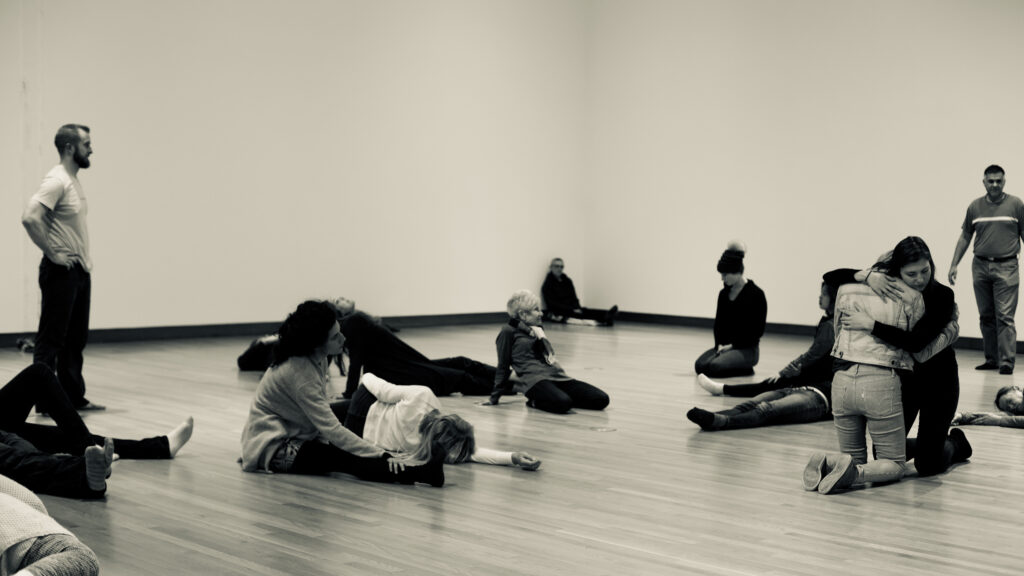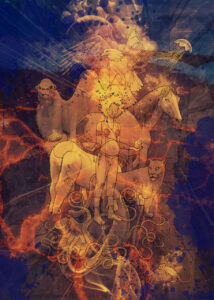Social Choreography Turns Audience into Artmakers

When you think about experiencing art, what comes to mind? Likely, you imagine going to a museum to look at paintings, or to the theater to watch a play.
What if instead of observing art, you—and the people around you—were the art?
That’s one of the many ideas behind “Amendment,” a project by Michael Kliën and his Laboratory for Social Choreography, that demonstrates his approach to art making—art as constituted entirely of the interactions of the people in the room.
Four years ago, the Nasher Museum of Art at Duke University hosted Kliën’s “Parliament.” Participants signed up to remain in a gallery space with each other, without speaking and without electronic devices, for up to six or seven hours at a time.
After an initial period of awkwardness and uncertainty, members of “Parliament” found ways to communicate and respond to each other’s movements. Spontaneous interactions emerged. Imaginations activated.
According to Kliën, this kind of experience provokes deep questions about “how we should be in the world”—as individuals, and with each other.

Unlike “Parliament,” “Amendment” lasts an hour and a half. During the first fifteen minutes, participants will be given instructions that will guide their actions and interactions for the next seventy-five minutes.
Kliën says that part of the instructions, or “propositions,” for “Amendment” is a new origin story for humanity, one reflects new conceptions of “how we relate to the natural world, to others, and to ourselves.” This story was drawn from another of his social choreography projects, the “Social Dreaming Matrix,” which interwove dreams from hundreds of participants during the early days of the COVID-19 pandemic.
After the first fifteen minutes, the participants are free to move, respond to the music playing in the space, interact with each other, negotiate their roles in the piece, and “understand and resist familiar social—and perhaps personal—patterns,” says Kliën. No participants are obligated to do anything they don’t want to do.
There are no recordings and no observers. Everyone is a participant. “There’s nothing but the experience,” said Kliën. “That’s the art.”
Who should sign up for “Amendment”? Anyone 18 years or older, “with a sense of adventure,” said Kliën. Comfortable clothes should be worn, allowing for easy movement and easy sitting on the floor.
Participants can sign up for one or both “Amendment” sessions, which take place from 6 p.m. to 7:30 p.m. on Monday, April 18 and Tuesday, April 19 in the Rubenstein Art Center, or “Ruby,” at Duke University. On Wednesday, April 20, at noon, there will be an open reflection session for people who took part in the sessions in the Ruby Lounge.
Sign up by emailing the Laboratory for Social Choreography at labsc@duke.edu.
